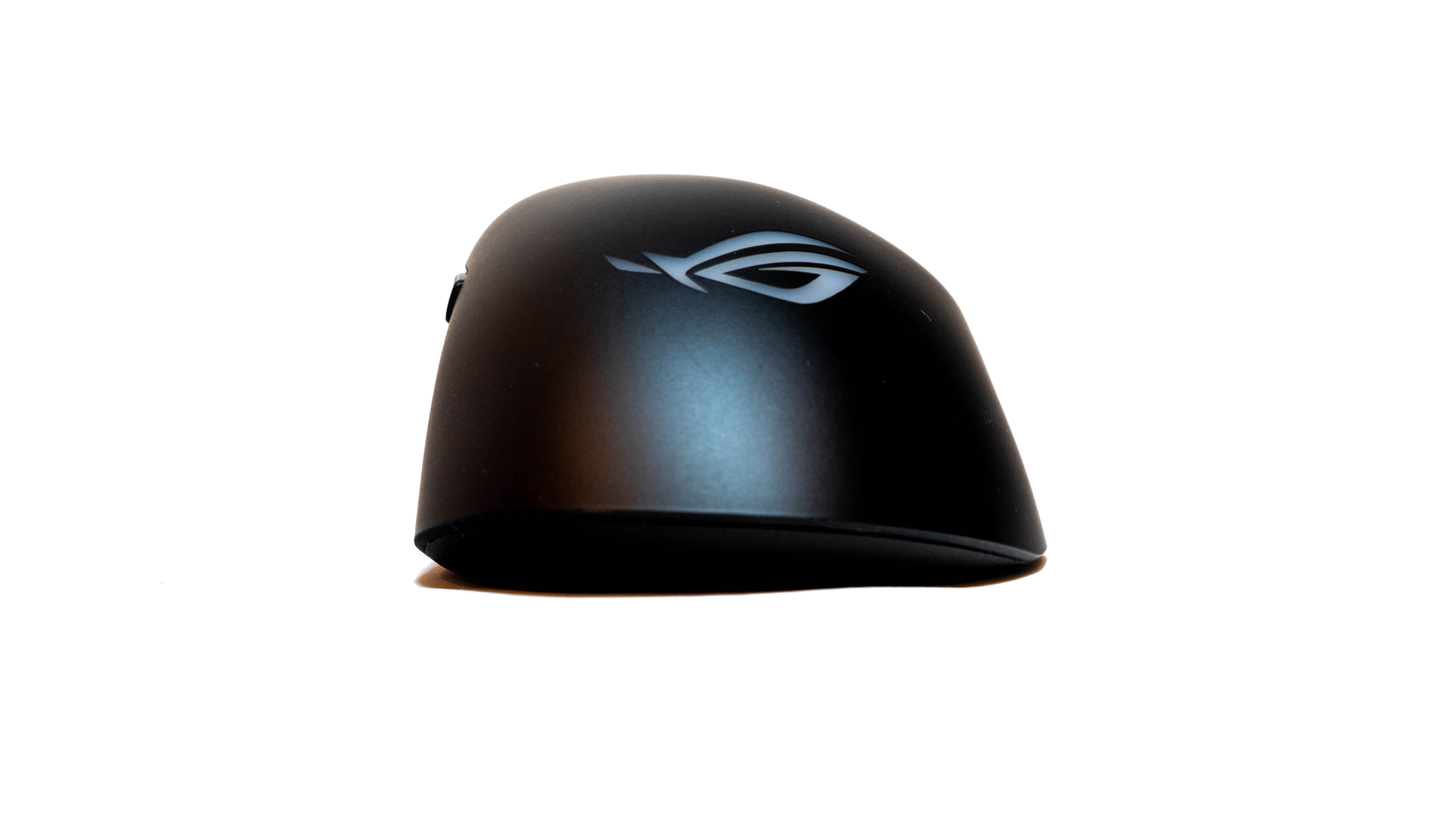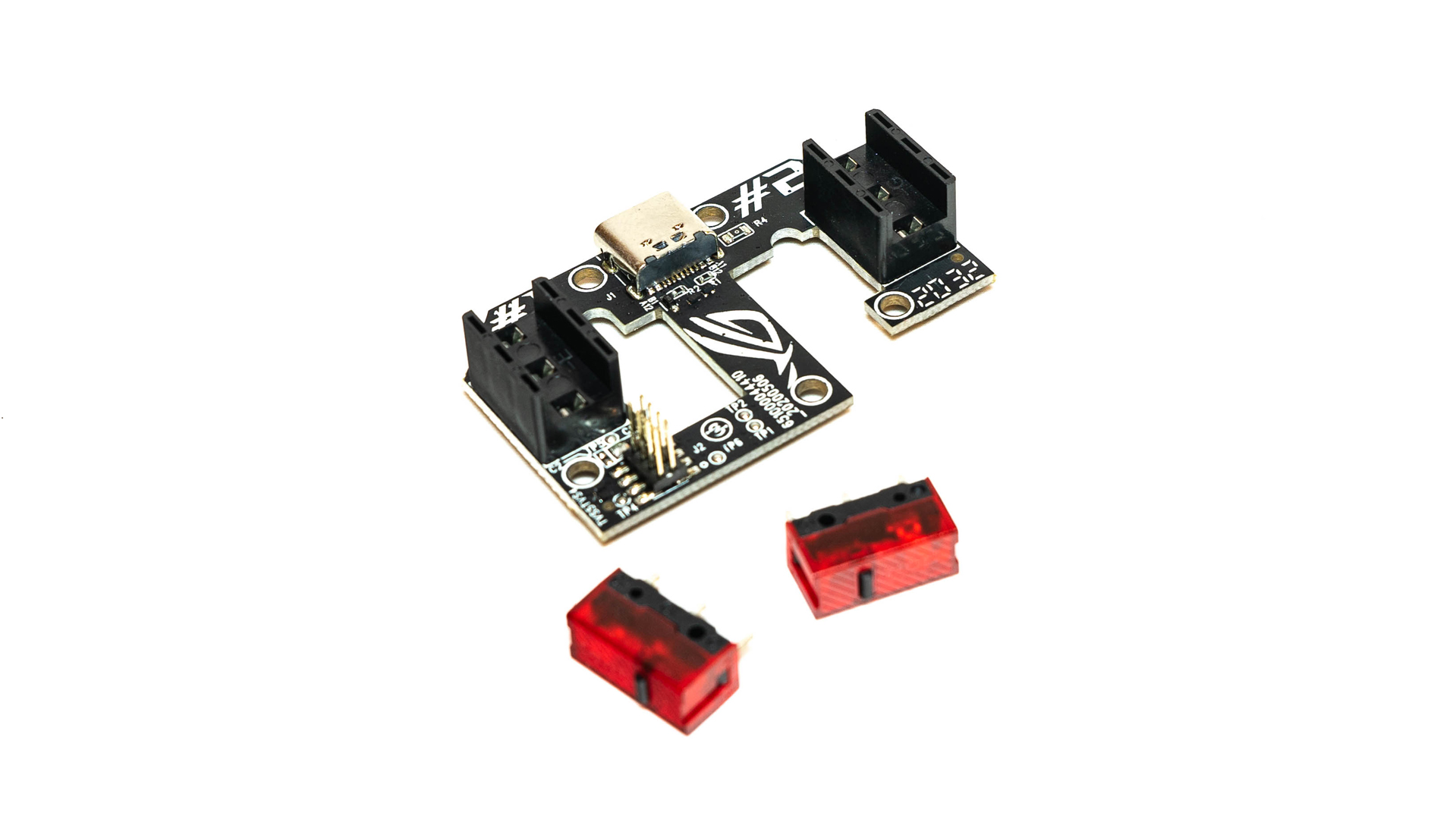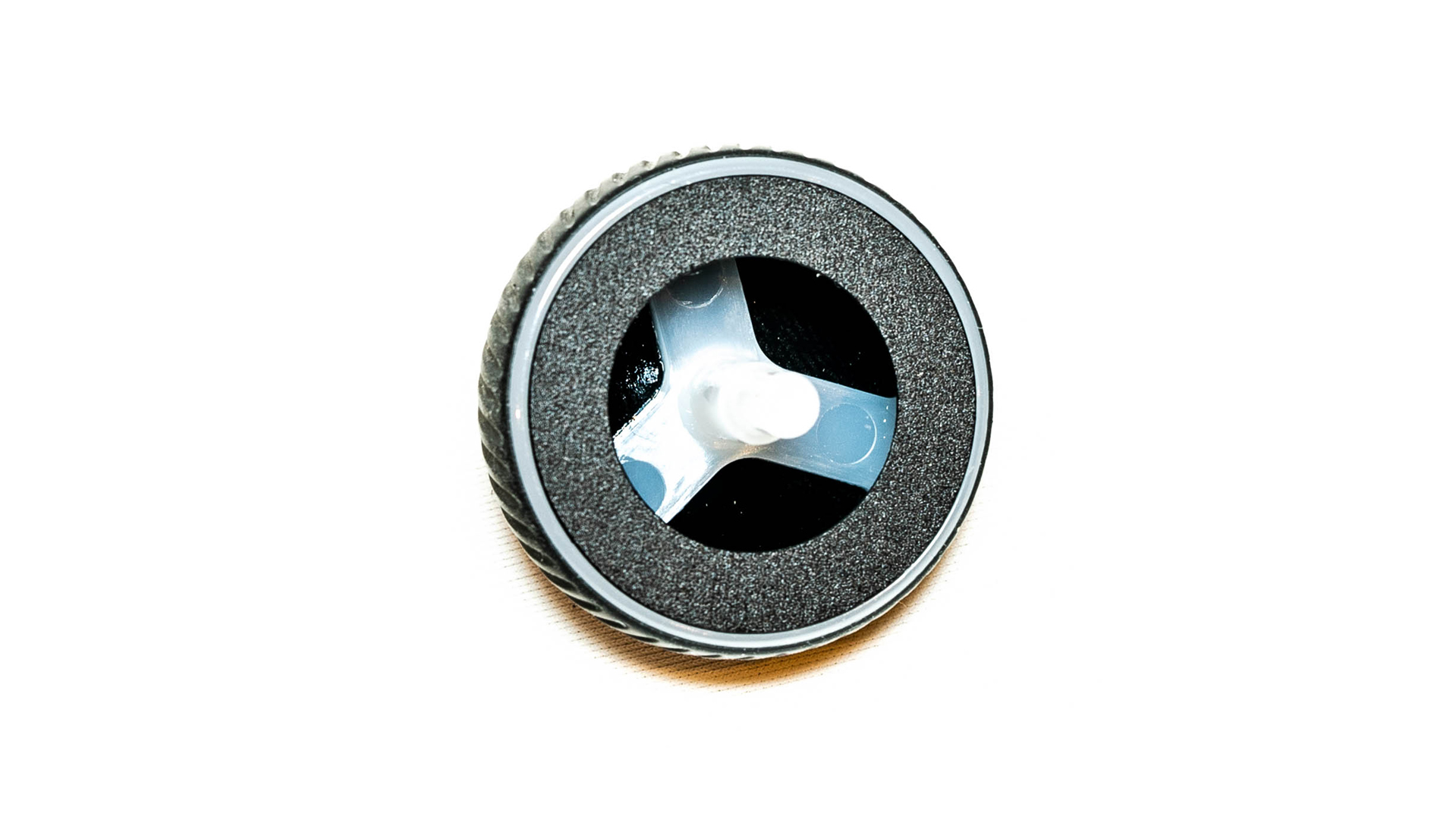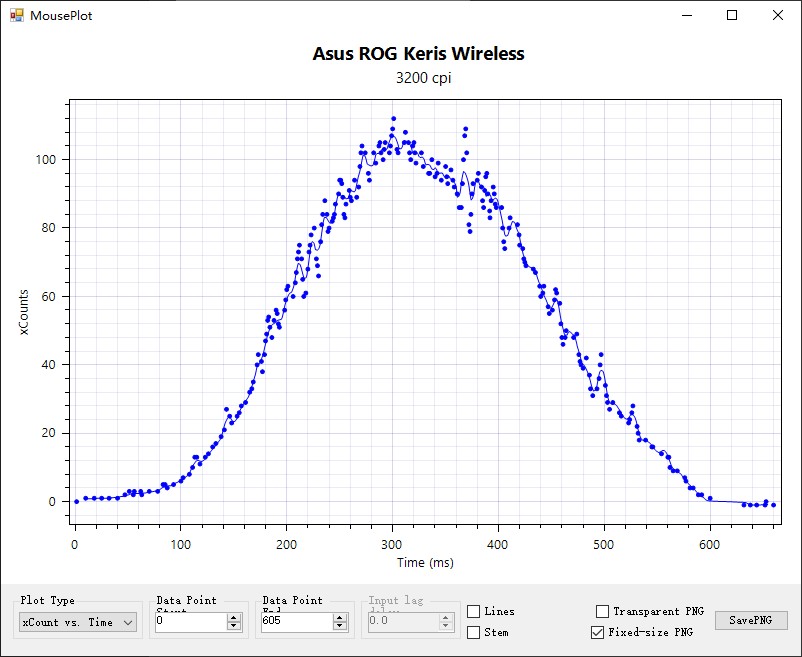ASUS ROG brand peripherals are generally named after swords, and the tri-mode wireless gaming mouse we got this time is based on the Kris (Keris) short sword from Malaysia. The wavy blade design makes the mouse’s shape asymmetrical and not friendly to left-handed users.
This time, the Keris mouse focuses on a lightweight design, with no external holes but honeycomb support inside to reduce the weight, and a sensor fitted with a maximum of 16,000 dpi and a 1000Hz polling rate. It also inherits the same interchangeable Micro switch design(push-fit switch sockets) as the Gladius II series, and the interchangeable magnetic side buttons allow for more personalisation of the mouse. The mouse comes with RGB lighting effects and supports Asus AURA Sync. The included cable uses a Type-C connector and the Asus’ own ultra-soft ‘Paracord'(similar to Razer’s SpeedFlex cable).
So, let’s dig into the detail!
Package Appearance
The outside packaging
New mouse features are printed on the back of the packaging

The mouse, connection cable and the replacement side buttons

Instructions menu, ROG stickers, replacement feet pads and Omron switches

Product Analysis
In terms of size, this mouse is a medium-small, mid-rear bulge setting and is only suitable for right-handed grips, which will take some time to get used to in larger hands

In terms of materials, the mouse has a zoned setting, with a matte finish on the PBT polymer buttons and left/right side grips and a smooth surface on the rest of the mouse
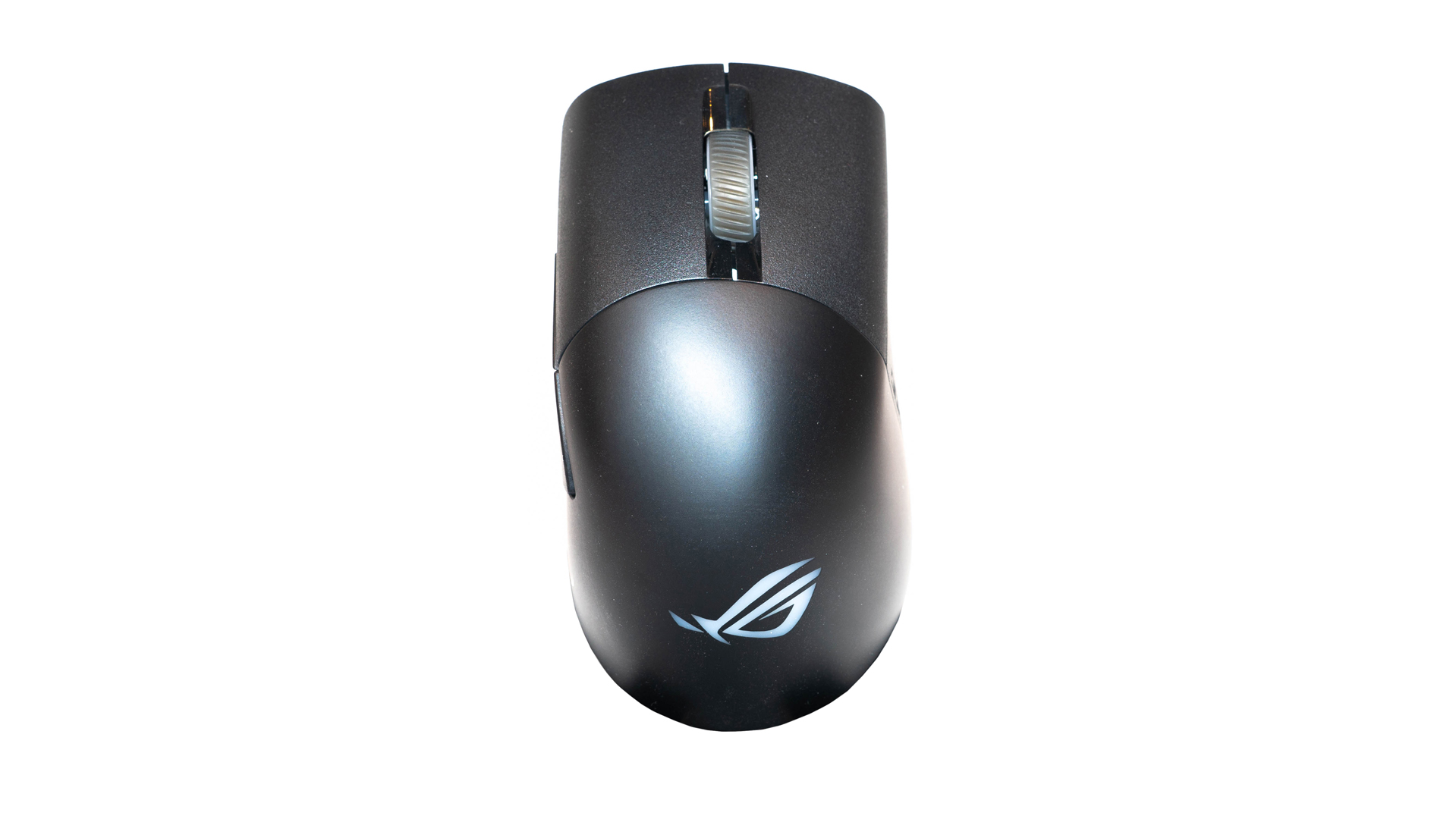

The scroll wheel is made of translucent plastic and the RGB light effect can be projected directly through the wheel

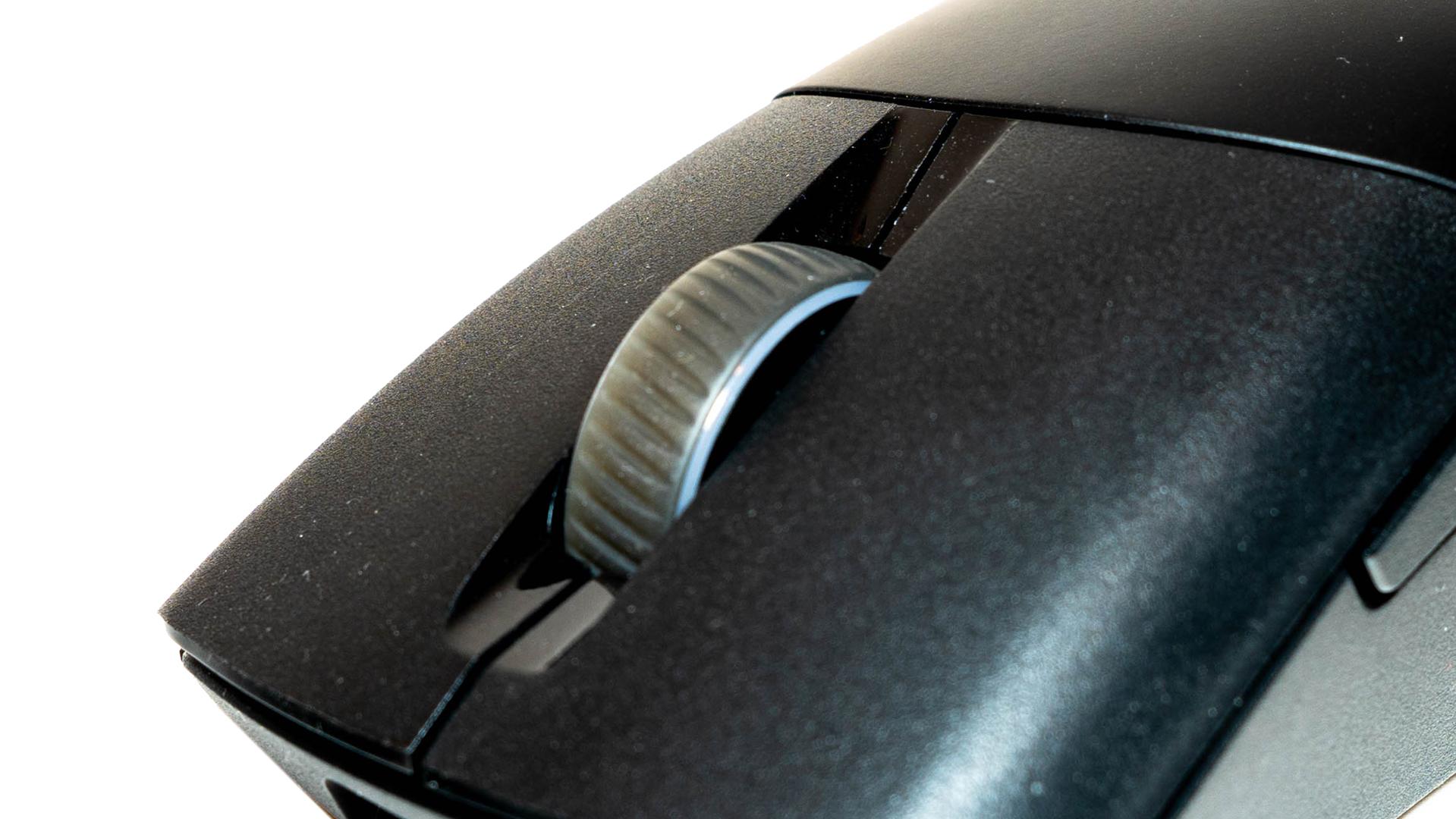
The ROG logo on the back has the same effect and brightness is guaranteed


The mouse feet pads have a novel design, with a triangular design spread over the four corners, the reflective prism is in the middle, the DPI toggle button on the upper left and the pairing button is next to it; the switch on the right is responsible for switching between wireless and Bluetooth modes, at the bottom is the USB receiver storage slot, a very thoughtful design

The front looking – Cable connection with Type-C connector
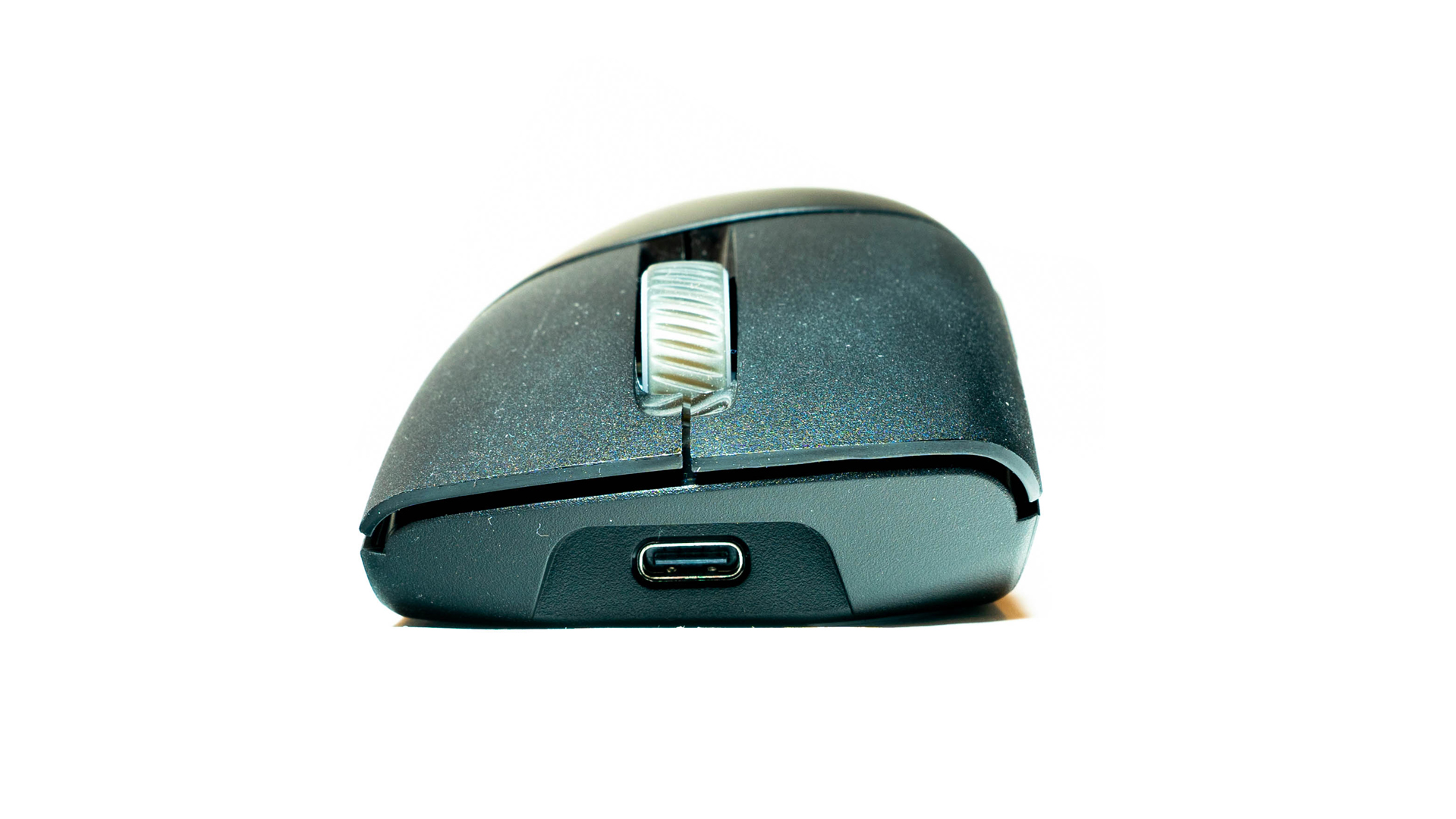
The side-looking
The included side keys have a black translucent design and are magnetically replaceable. But the keys feel very loose in the hand
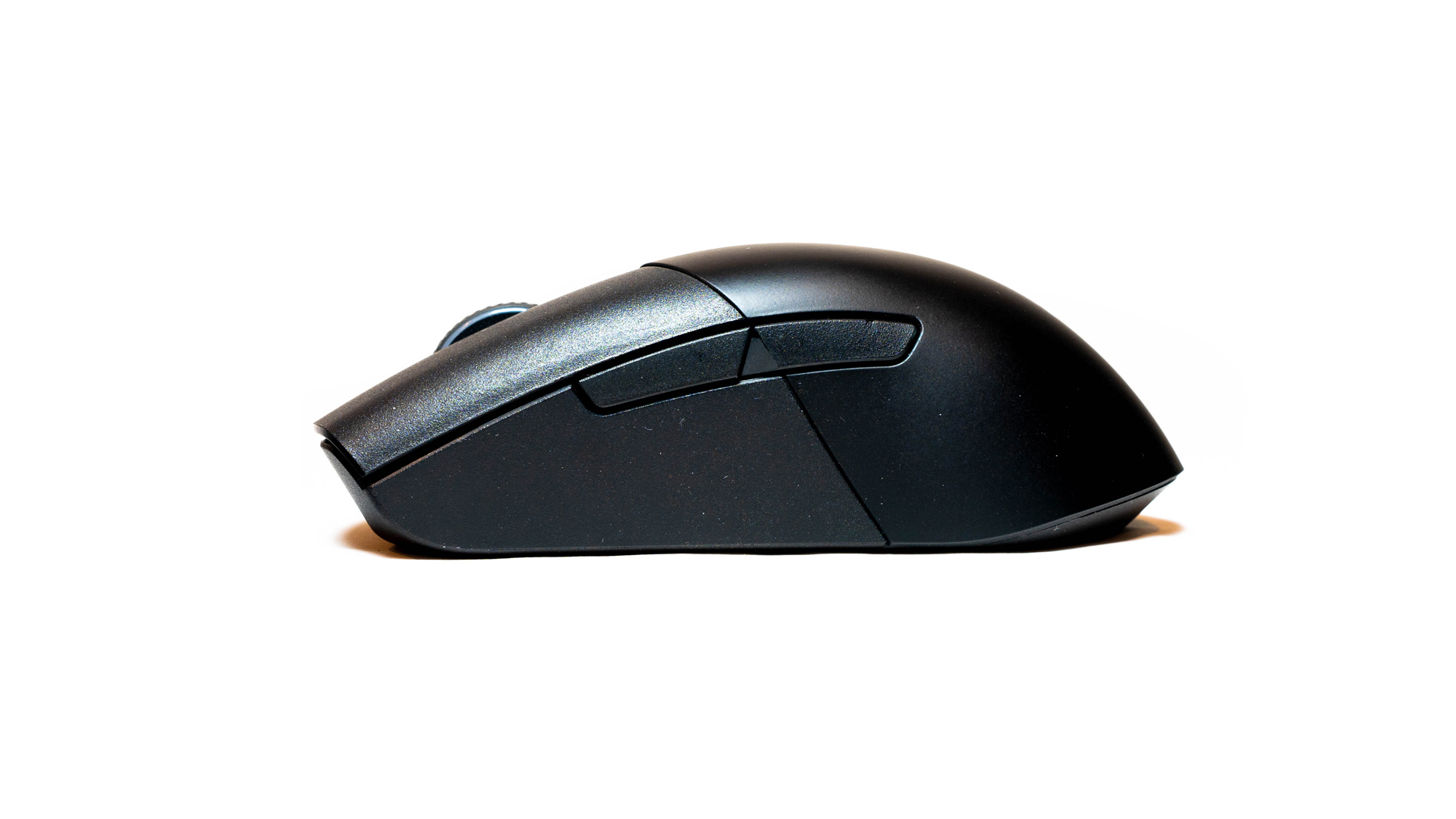

The interchangeable side keys are available in two colours: grey and pink
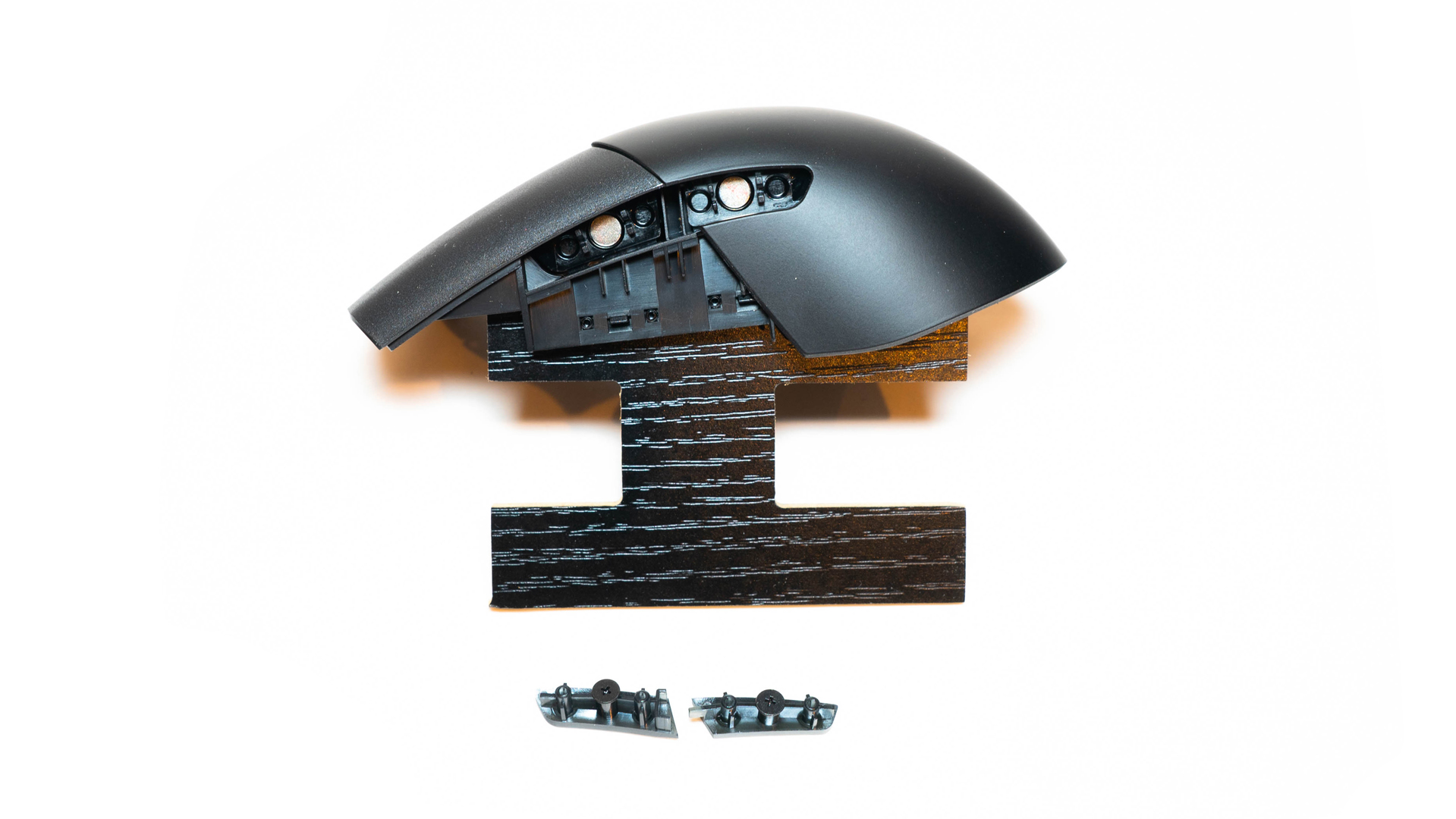

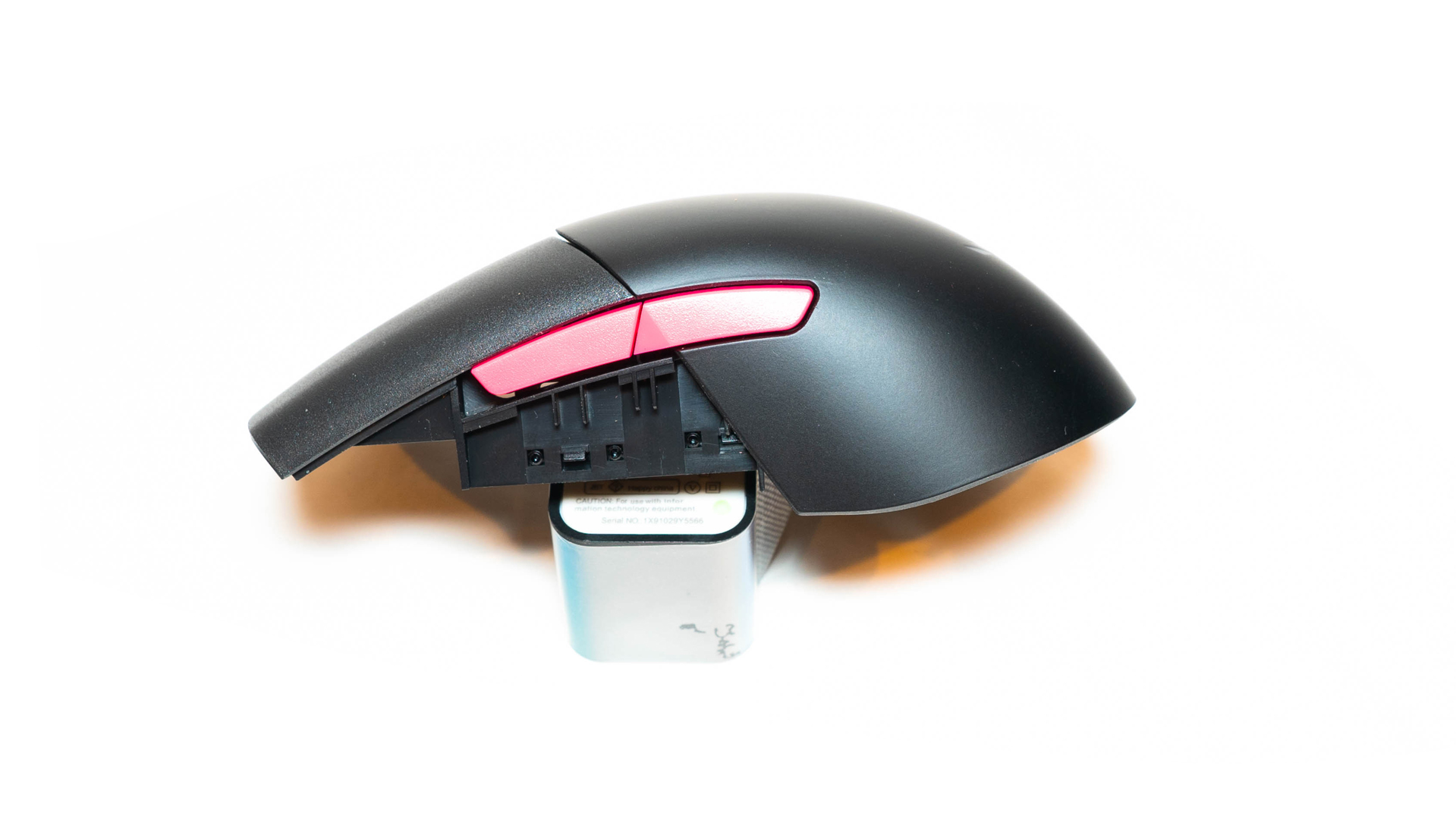
The weight of the mouse is 115g with cable, the weight of the mouse itself is only 81g


Software Analysis
The ROG products are now managed by Armoury Crate
Button settings

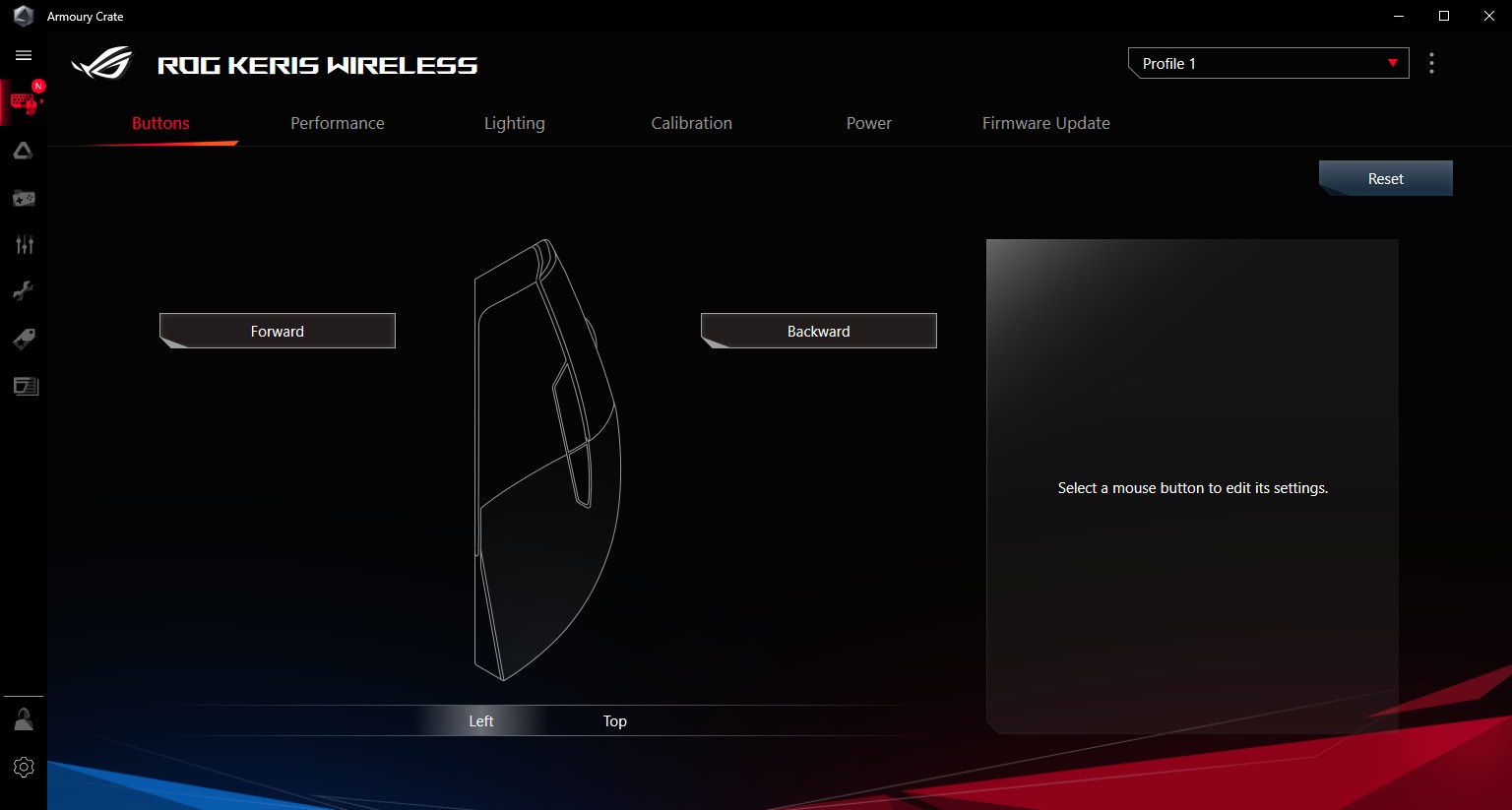
Performance settings
Users can change the 4 DPIs up to 16000, Polling rate, Button response time and turn Angle snapping on/off

Lightning settings
The mouse supports ASUS AURA SYNC and the brightness can be adjusted here

Calibration settings
This setting allows users to calibrate the lift gap between mouse and mousepad

Power settings
This allows users to monitor the battery level and set up the power saving profile

Firmware update
this allows users to keep the latest firmware of this mouse
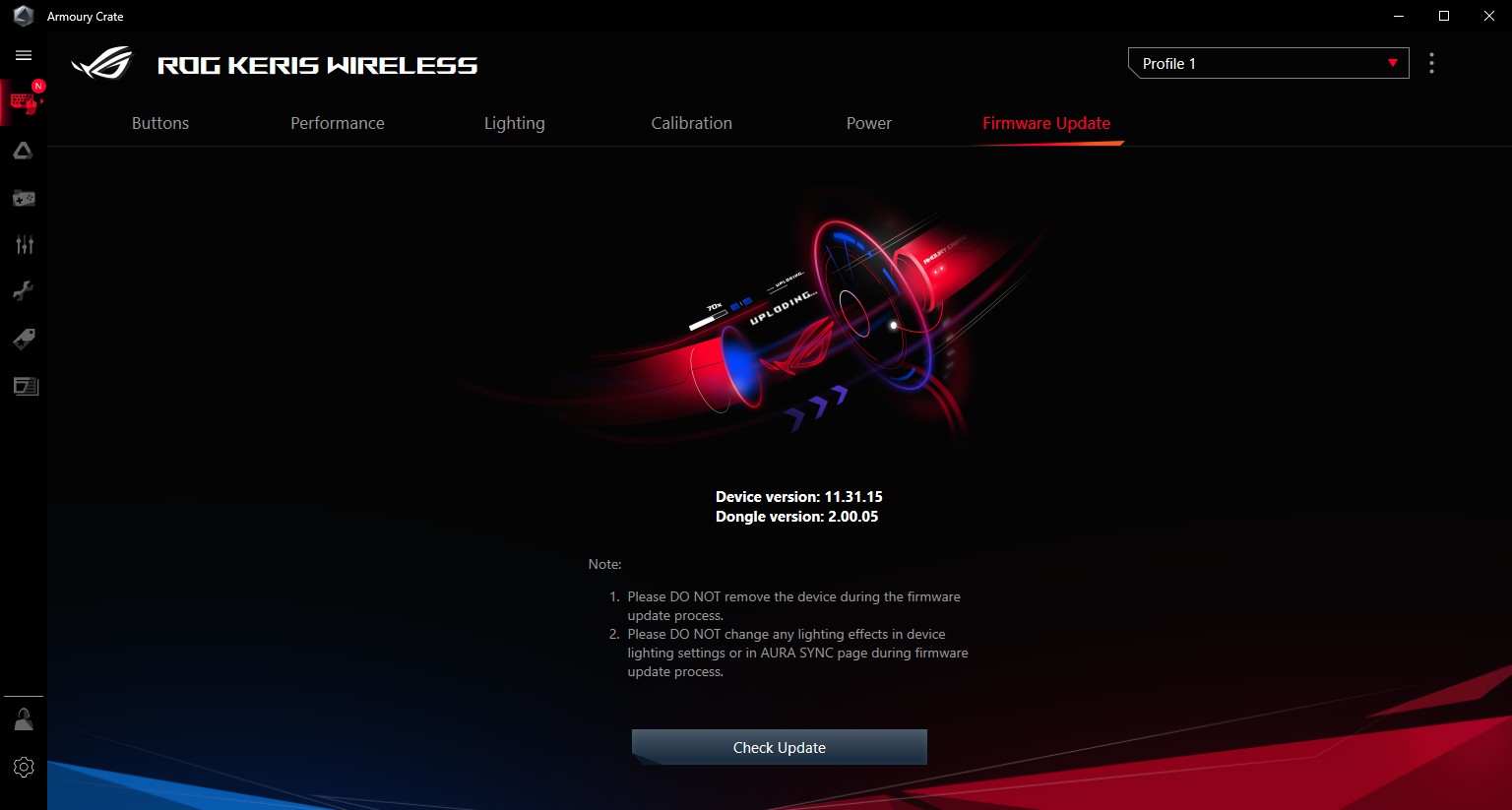
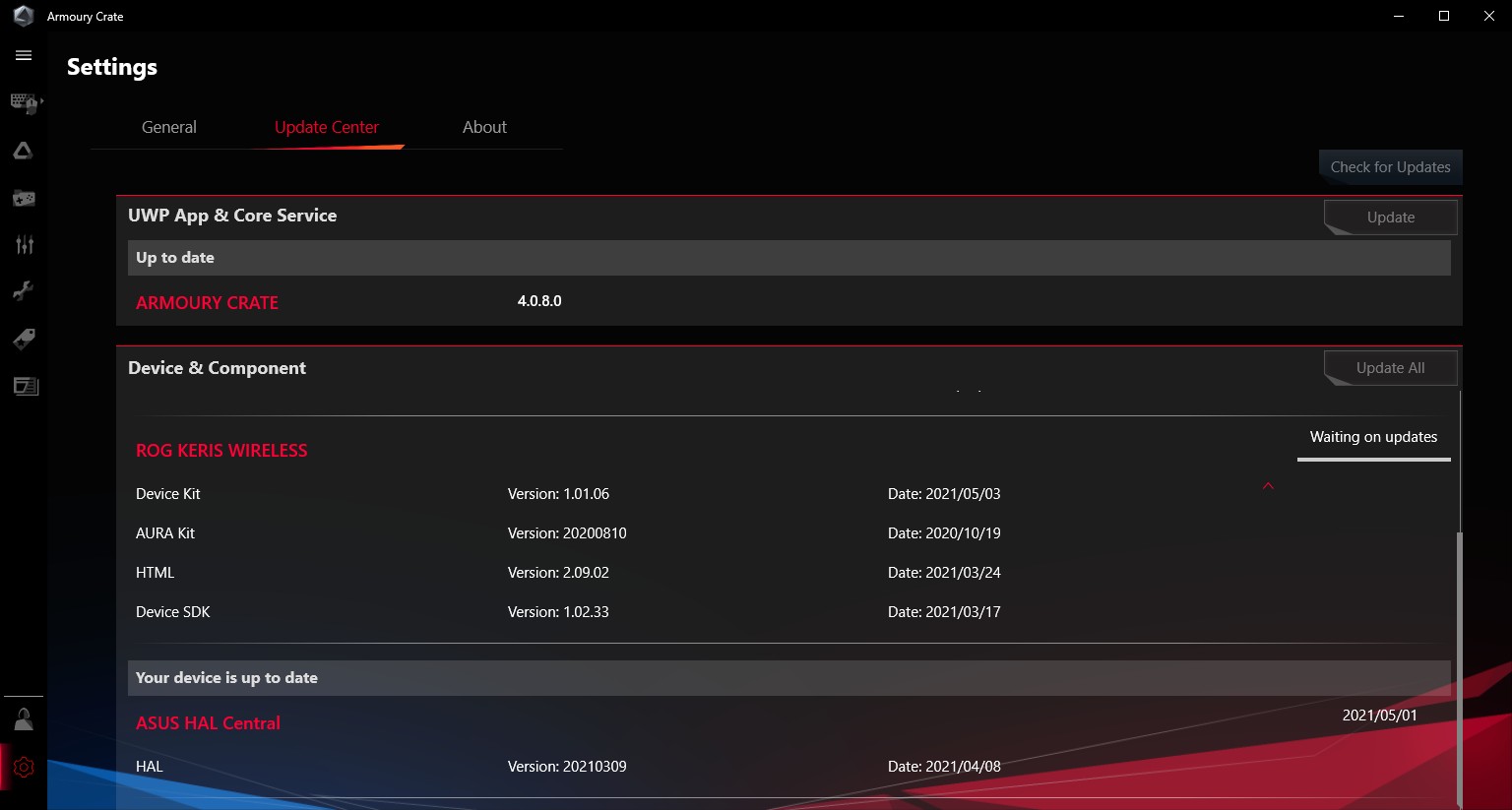
Performance Test
The Teflon footpad provides an ultra-smooth feeling, but they are not as comfortable to use as the larger ones, and had it not been for the included set of replacements, we would have thought for a moment that this was the result of Asus saving cost.
We have tested the mouse on the most popular mouse pads: Fine coated pad, aluminium, soft silicone pad, fine fabric cloths thin/thick pad and coarse fabric cloths thin pad.
The tests are based on the mouse’s start, Smoothness, Brake, and Transparency.
Fine coated pad
Start: Medium level on both Static friction and dynamic friction
Smoothness: Very smooth
Brake: Very easy to brake and good positioning accuracy
Transparency: Very good contact, no heightened sense of passage that results in misalignment on the Z-axis
Aluminium pad
Start: Very low level on both Static friction and dynamic friction
Smoothness: Extremely smooth, but the maintenance is relatively difficult. The Teflon feet skates will be frayed quickly by the aluminium surface
Brake: Very easy to brake and good positioning accuracy
Transparency: Very good contact, no heightened sense of passage that results in misalignment on the Z-axis
Soft silicone pad
Start: This textured pad makes the higher static and dynamic friction feeling
Smoothness: Very smooth
Brake: Very easy to brake and good positioning accuracy
Transparency: a relatively thin thickness of the cushion, the material is quite solid and the permeability is good
Fine fabric cloths thin pad
Start: Low static friction and very high dynamic friction
Smoothness: Extremely smooth
Brake: Very easy to brake and good positioning accuracy
Transparency: A thin pad with soft material and good permeability
Fine fabric cloths thick pad
Start: Very low level on both Static friction and dynamic friction
Smoothness: Very smooth
Brake: Easy to brake, positioning is accurate after calibration, the resistance is light. Muscle memory is easier to form and more friendly for novices
Transparency: A thick pad with soft material and good permeability
Coarse fabric cloths thin pad
Start: Very low level on both Static friction and dynamic friction
Smoothness: Extremely smooth
Brake: Easy to brake and relatively accurate positioning
Transparency: A thin pad with soft material and good permeability
This mouse is powered by the PAW3335 optical engine, still one of the mainstream solutions in wireless gaming mouse today, and it also has the ability to compete with Logitech’s HERO 12K. Some may question why the PAW3399 was not used, after all, Logitech’s HERO and Razer’s FOCUS+ series use the PAW3399 as a custom engine with 20,000 ultra-high DPI which is not that particularly practical.
Disassembling Analysis
The backplate is locked with only two screws to reduce weight, under the round rubber plugs on each side

The inside looking of this mouse
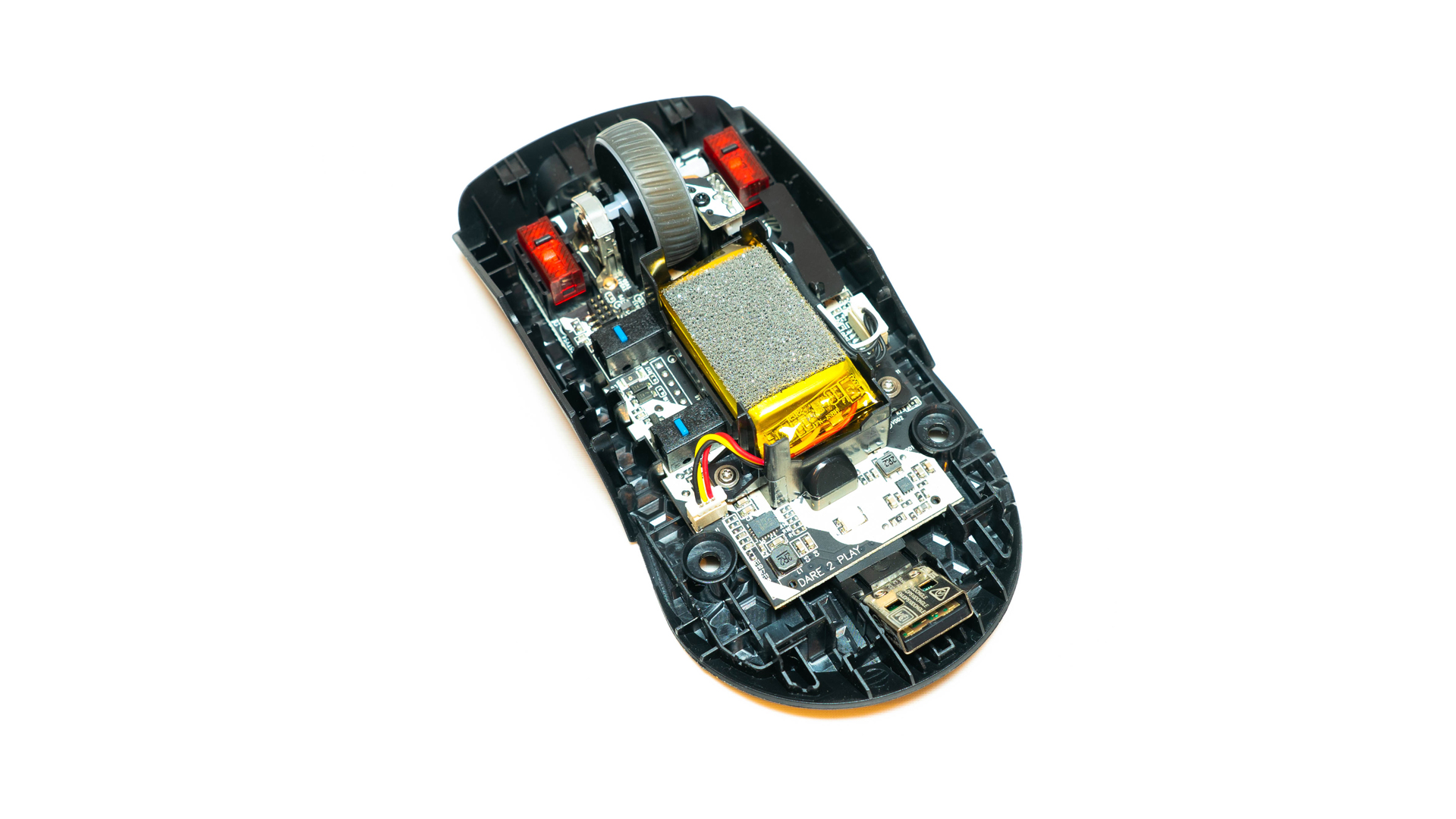
The mouse bottom case & inside after decomposition

The main left/right button switch board

Microswitch
The two main buttons are using the ROG Micro Switch which has a 70 million click lifespan with a gold-coated mechanical structure, this micro switch comes in a cool red translucent case with the ROG logo on it. The sound is crisp and clean with a clear sense of passage and great feedback from the switch bounce.
The complimentary interchangeable microswitch from Omron
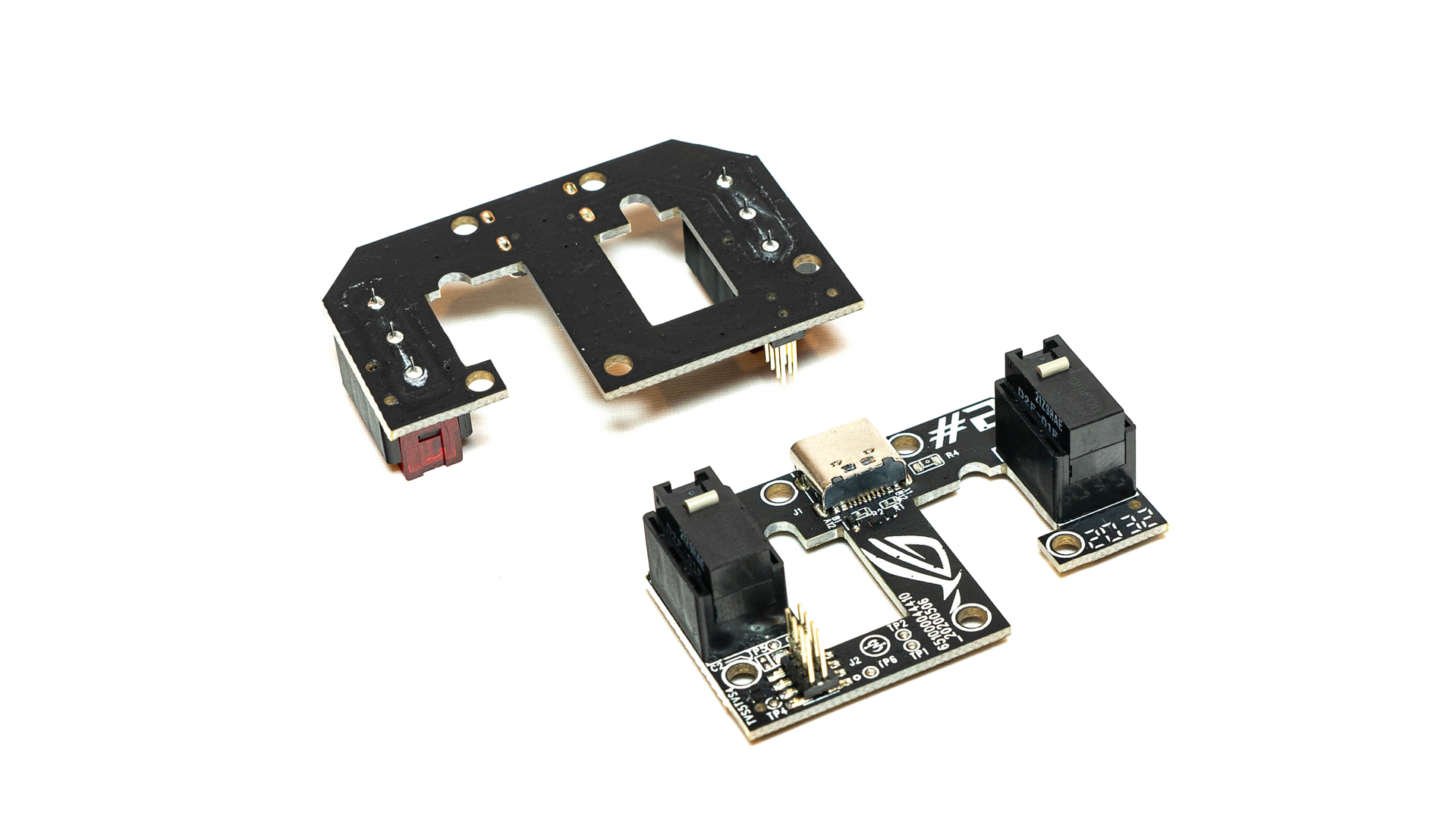
The mainboard with side button micro switches
The 2 blue-dots microswitches used by the side buttons are from Kailh, the model is ‘CMI126603D09’ with 30 million click lifespan and 60 ± 15 gf operation force
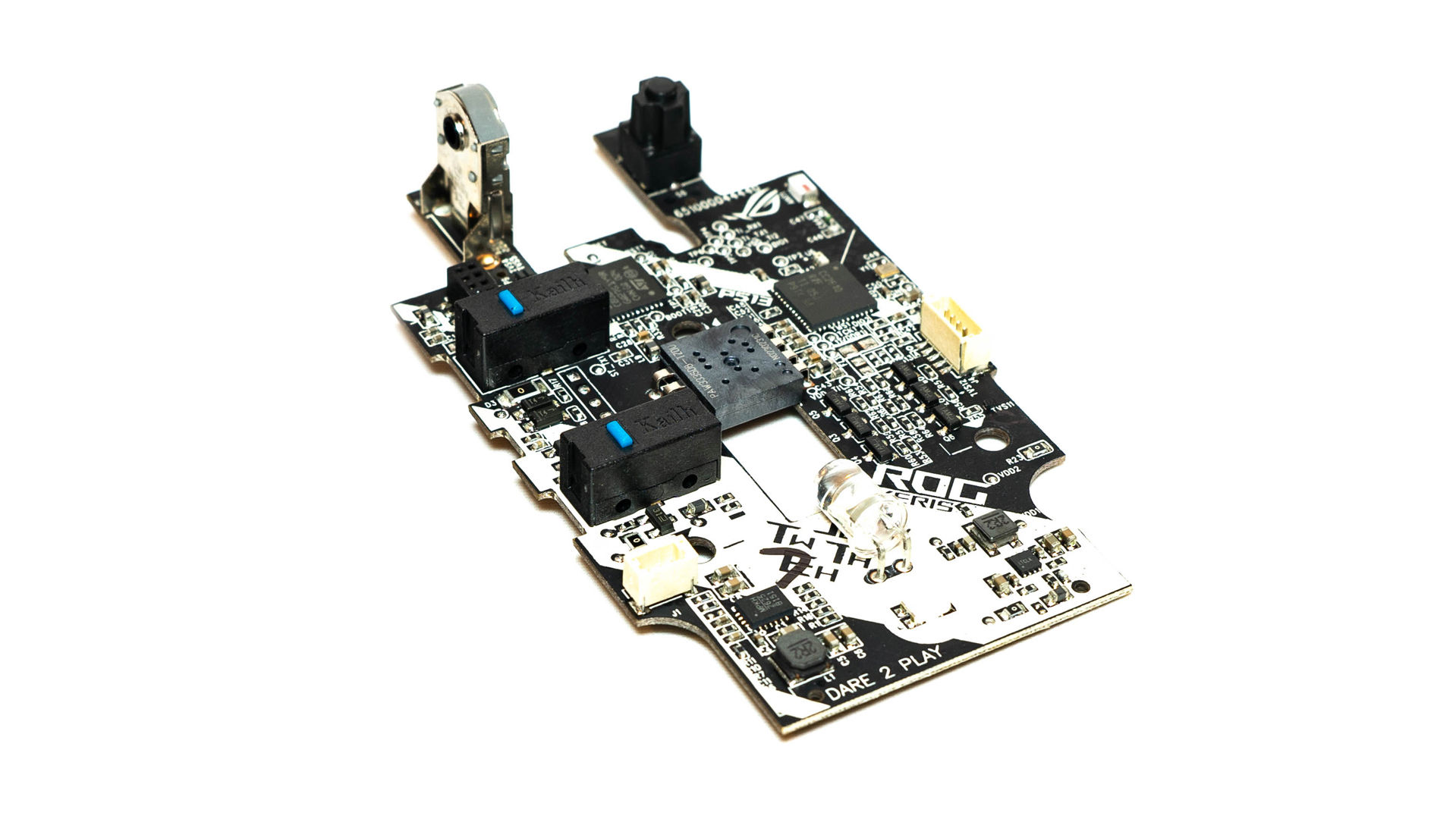
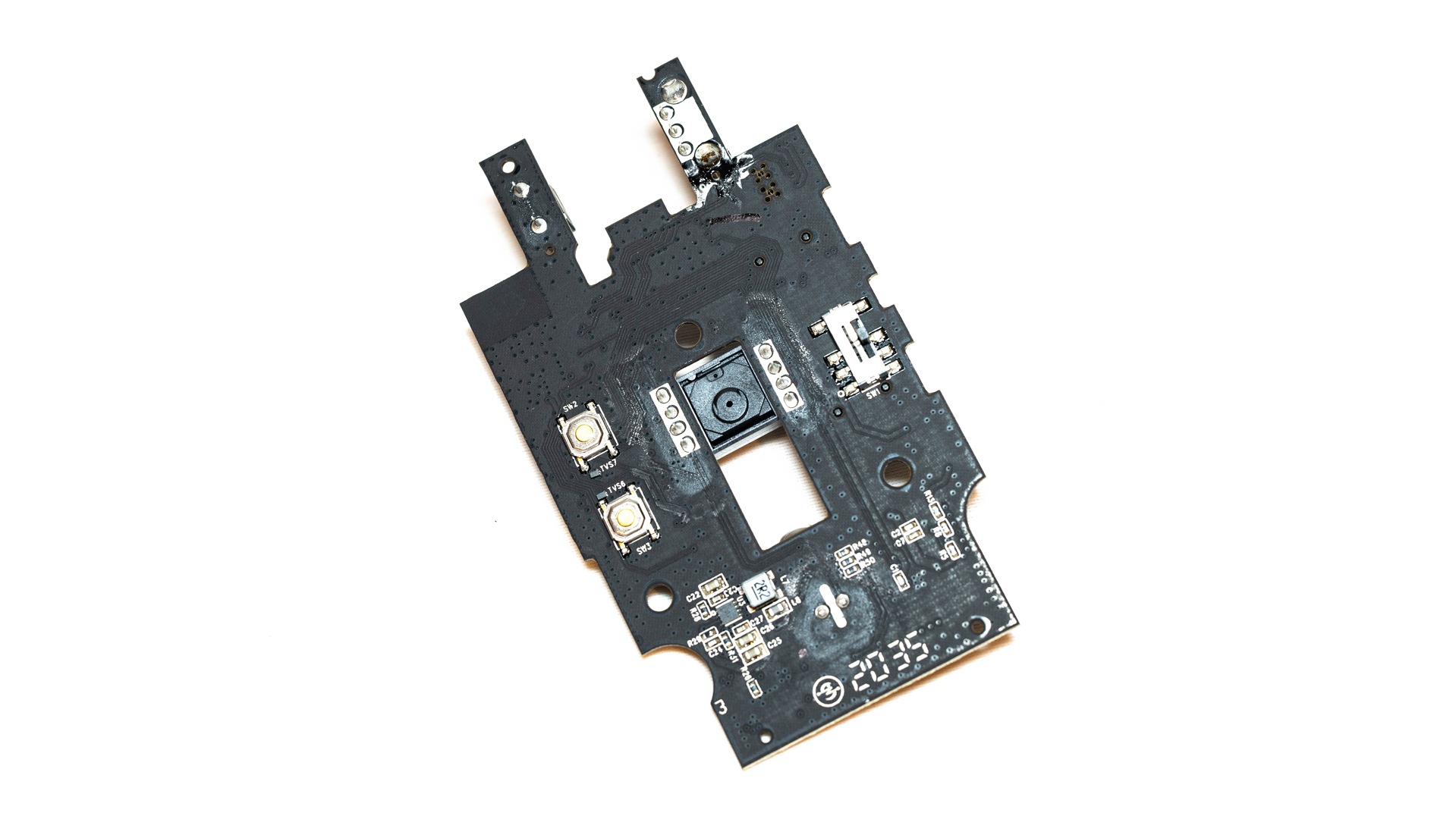
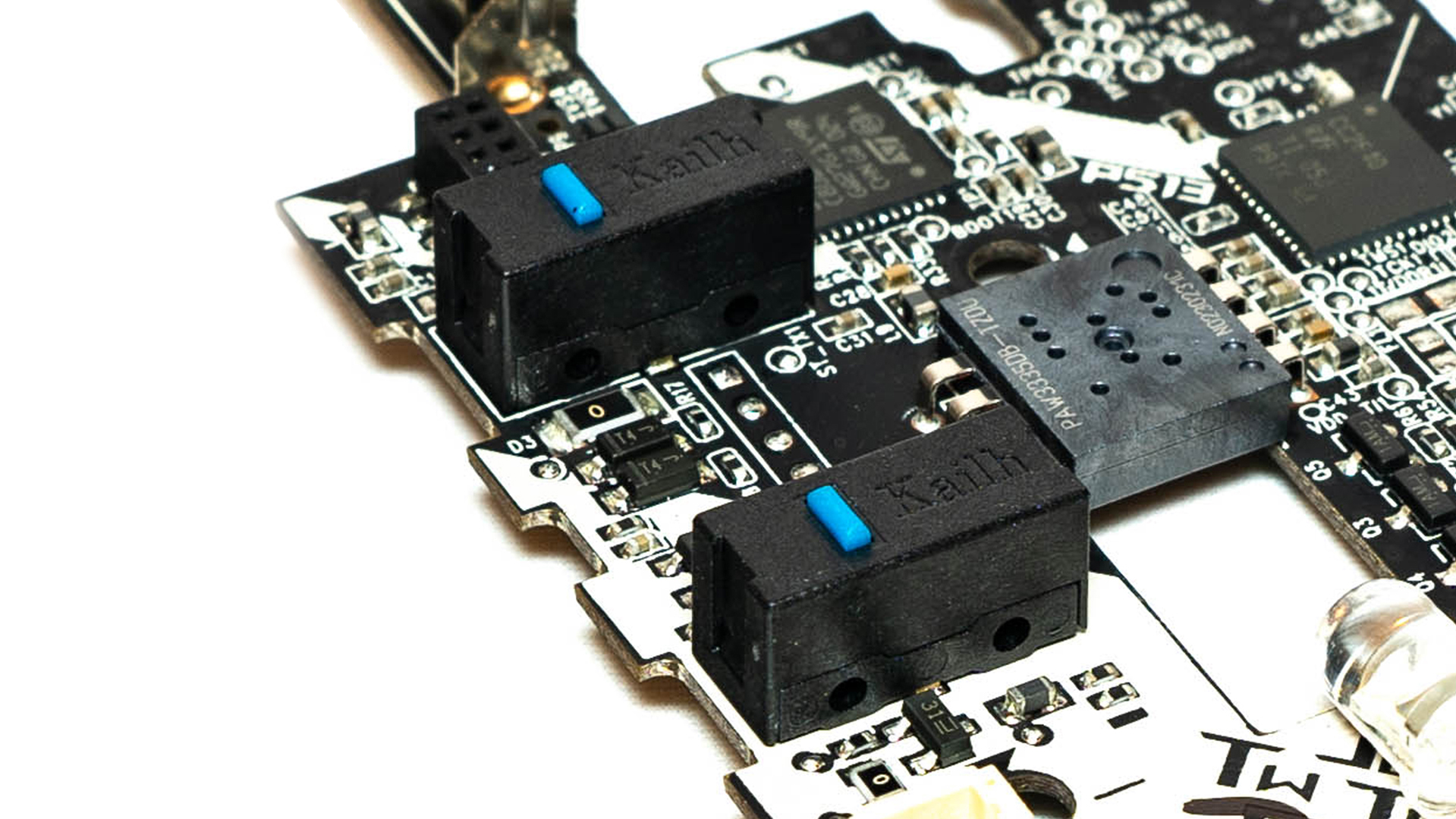
The roller encoder comes from Kailh’s 12mm series (CEN981212R01), 10-25 gf.cm, 800,000 lifecycles

The sensor is PAW3335 from PixArt, which has 16000 cpi, 400 IPS and 40 G acceleration speed

The ultra-low-power microcontroller chip STM32L412 from STI

The CC2640 SimpleLink Bluetooth Wireless MCU from Texas Instruments
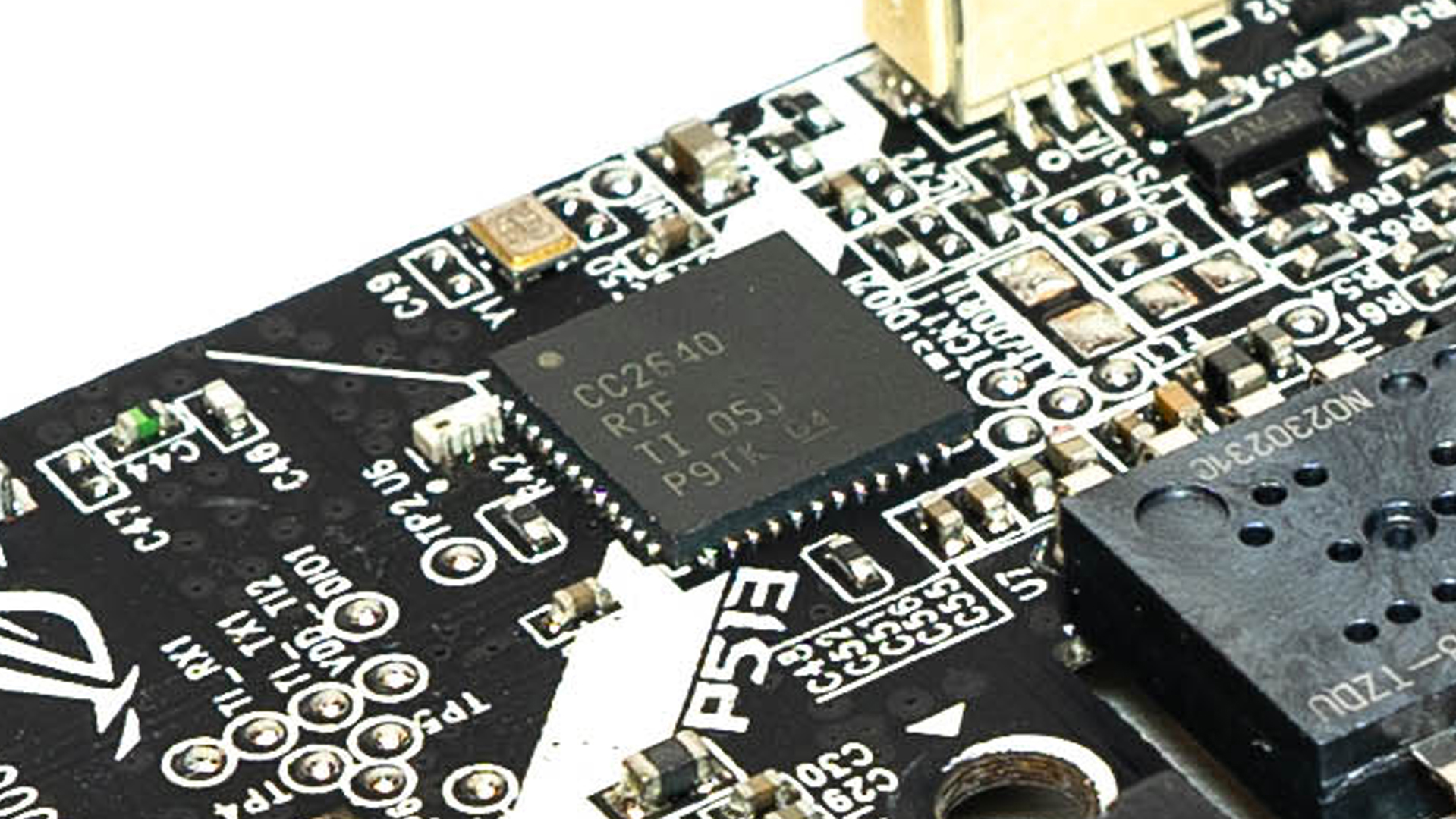
Usability Analysis
To test the line correction, frame loss, and smoothness, we are using the mouse test from Areson
This mouse without line correction function enabled

This mouse with line correction function enabled

The Frame loss control and the smoothness control are also quite good

Finally, we are using the powerful MouseTester v1.5
By using its powerful plot function, we are tested several mouse performances
xCounts vs Time
While the average line is smoother, which means it’s more linear on the mouse track movement; while the points of the counts are much closer to the line, which means the jitter of the engine is lower. As the graph shows, the result of this performance is acceptable in different CPIs
1600 cpi is under a normal use level, jitter is not large and relatively stable
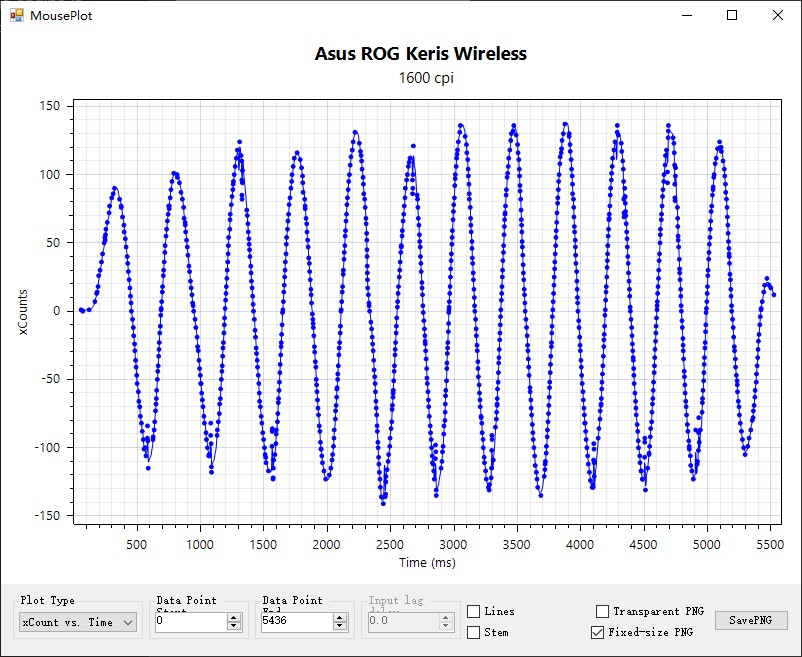
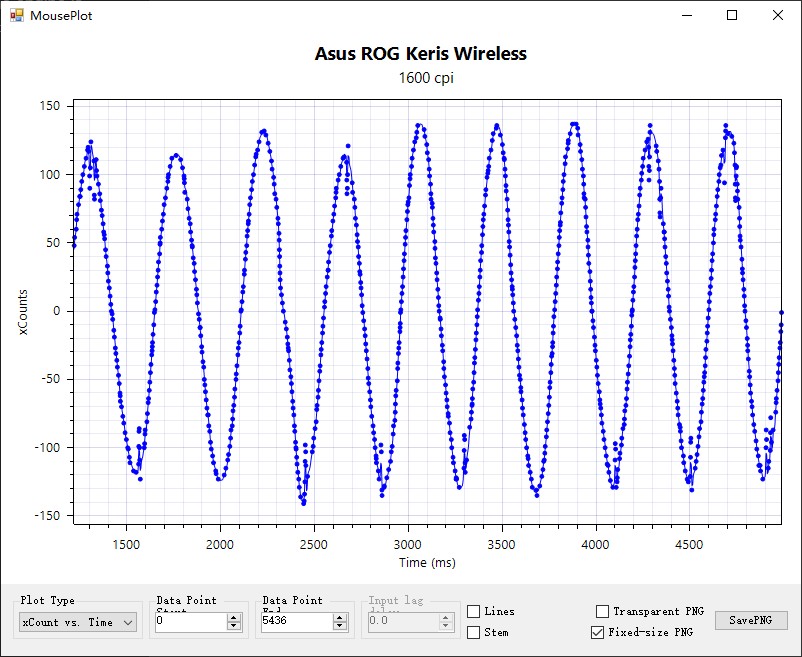
1600 cpi, jitter is a little bit unstable

6400 cpi, jitter is under control
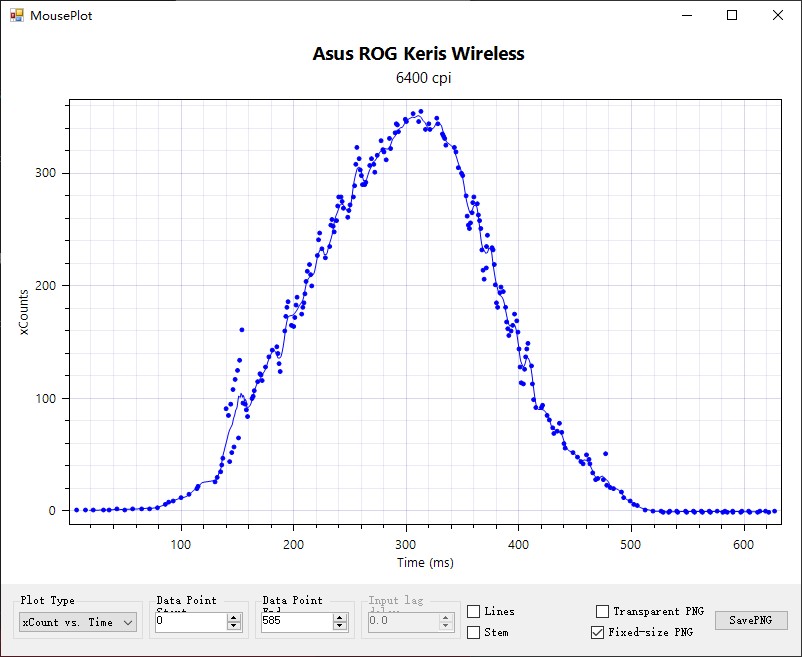
12800 cpi, jitter is surprisingly under control

16000 cpi, jitter is still under control
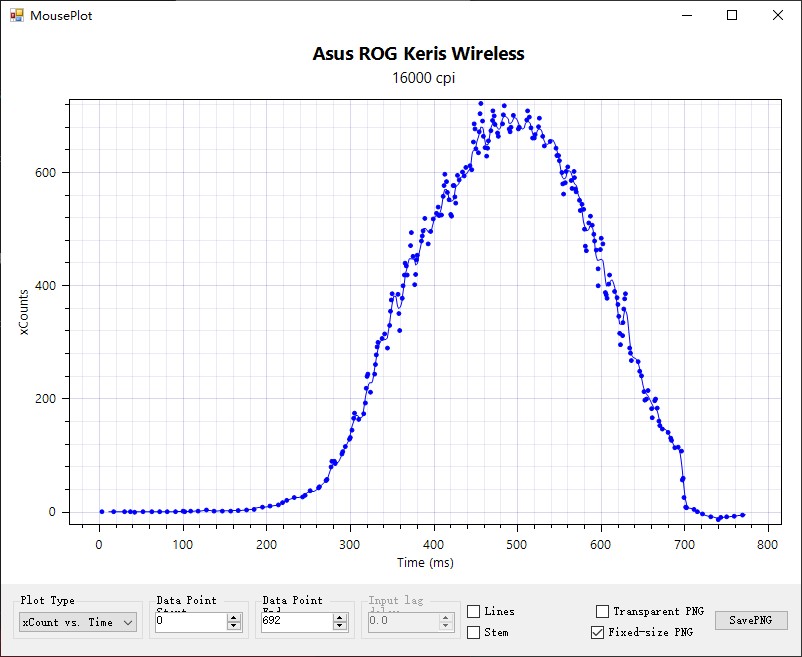
X vs Y
This function is to detect mouse frame loss, As the graph shows, the result of this performance is good

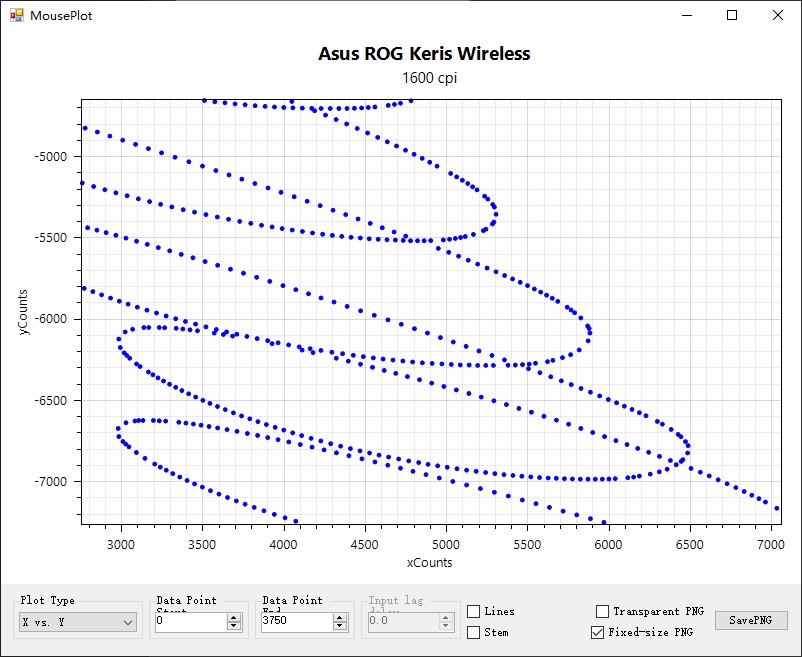
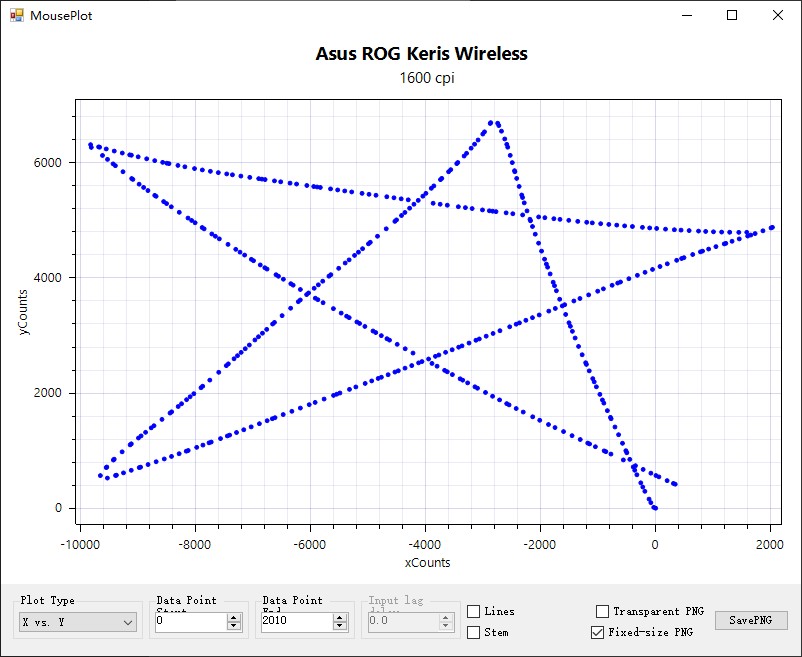
xyVelocity vs Time
The unit of velocity is m/s. This test is mainly to look at the acceleration of the mouse. As the graph shows, the point of ROG Aeris is better for curve fitting, which means the jumped-like rapid acceleration rarely appears, The line of fit is coherent and also has a dense distribution
If there is a good device that allows the mouse to move at a constant speed, in this case, the speed line is straight, if the engine has acceleration, it will fluctuate, so this is the most ideal test method. The result of this performance is quite good

Summary
As a mid-sized wireless gaming mouse, the Keris Wireless is more suitable for FPS design type games. The lightweight design and excellent hardware quality bring players a very smooth and comfortable experience, and the interchangeable micro-action design can meet the different needs of users. The Bluetooth and wireless connections are responsive and stable, and the battery life, while slightly lower than the official claims, is still reasonable.
Pricing is a little on the expensive side for a mid-sized mouse at AU$139 – after all, the Glorious Model O Wireless is only AU$129 in Australia at 69g – and gamers may prefer to spend a little more on a larger, two-handed mouse like the Logitech G Pro wireless or Razer Viper Ultimate.
In terms of overall quality, the Keris wireless has improved the internal structure of the buttons to avoid the springing sound caused by reverse vibration, removed the non-slip rubber pads like the Gladius II which were very prone to ageing and breaking on the left and right sides, and replaced them with a frosted PBT design to reduce the likelihood of oiling. These details really bring this mouse to the next level of quality.
For a more detailed hands-on experience with this mouse, check out our review video below

EPIC REWARD: EPIC DESIGN AWARD

ASUS ROG AERIS WIRELESS GAMING MOUSE OFFICIAL WEBSITE: HERE



